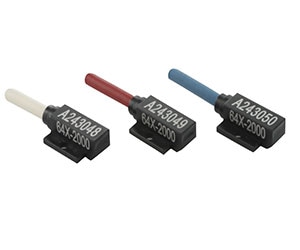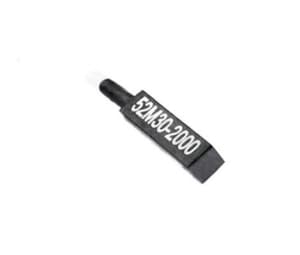-
Login/RegisterHi, GivenNameMy AccountLogin AgainCreate an AccountRegister to enjoy these benefits!
- Order Samples
- Track Your Orders
- Save Product List
- Access Additional Resources
- Get Tech Updates
Welcome!- Online Order Status
- Track Order History
- Samples Order History
- Check Order Status
- Request Secure Access
- My Parts List
- Recently Purchased
Manage AccountLogin to access your orders, address book, product lists, and more.
- Products
- Industries
- Tools & Resources
- Shop TE Store
- Services & Trainings
- About TE
- Sustainability
- Cart (0)
- Login/Register
- Track Your Order
-
- We are here to help!
- Get in touch with our product experts.
- Chat
- Email us
- Products
- Industries
- Tools & Resources
- Shop TE Store
- Services & Trainings
- About TE
- Sustainability
- Cart (0)
- Hi, GivenName (Log out)
- Dashboard
- Your Account
- Track Your Order
- Recently Purchased
-
- We are here to help!
- Get in touch with our product experts.
- Chat
- Email us
This product is not currently available. For more information, including distributor inventory, please contact us.
-
Overview
This product is not currently available. For more information, including distributor inventory, please contact us.
Flange Mount Impact Test Accelerometer

- MEAS
- MEAS 52
Product Features
-
Accelerometer Type : MEMS DC
-
Vibration Sensor Product Type : MEMS Accelerometer
-
Number of Sensing Axes : Uniaxial
-
Frequency Response (Hz): 0-1400 to 0-8000
-
Full Scale Output Voltage (VDC): ±.1
Available from

Build and price the product now
Overview
The 52F series flange mount impact test accelerometer has an ideal amount of internal gas damping which provides outstanding shock survivability and a flat amplitude and phase response up to 8000Hz.

The accelerometer has been recently upgraded to incorporate the most advanced piezoresistive MEMS sensor on the market and features the next generation of the reliable TE Connectivity (TE) piezoresistive chip with superior stability and measurement accuracy. The model 52F accelerometer is available in ranges from ±50g to ±6000g and features a full-bridge configuration with a nominal 4000Ω impedance that offers quick warm-up time and minimal drift, unlike lower impedance designs on the market. The accelerometer is packaged in a low-profile Aluminum housing with a shielded low-noise cable specifically designed ideal for tight and challenging installations. The model 52F has an ideal amount of internal gas damping which provides outstanding shock survivability and a flat amplitude and phase response up to 8000Hz. The model 52F accelerometer is fully encapsulated in Stycast for IP65 protection over the full operating temperature range of -40°C to +90°C. TE Connectivity also supplies the calibration data in a user friendly excel format which enables high volume users to quickly upload the calibration information for each sensor installed.
Benefits
- Small Weight <1.0 grams
- Linearity <1%
- 10,000g Shock Protection
- 2-10Vdc Excitation
- IP65 Environmentally Sealed
- Optimum Gas Damping
- Small Size, Ideal for Side Impact Testing
- 28kHz Resonant Frequency
- Next Generation Piezoresistive MEMS Sensor
- ±50g to ±6000g Ranges
- Compliant to SAE-J211/J2570
- Compliant to ISO-6487
- High Over Range Protection

Applications
- Crush Zone Testing
- Side Impact Testing
- Auto Safety Testing Applications
- Bio-mechanical Studies
- Transient Drop Testing
- Helmet Impact Testing

Other Auto Safety Sensors
FAQ
Frequently Asked Questions
What is an accelerometer?
Accelerometers measure the acceleration or vibration of a device or system. Physically, the accelerometer can be considered as nothing more than a weight on a spring which is connected to a frame. When the frame is moved, the mass will stay at rest until the spring, being stretched, can exert enough energy on the mass to make it move.
What is difference between piezo-electric (PE), piezo-resistive (PR) and variable capacitance (VC) accelerometers?
The word “piezo” comes from the Greek word “piezein” which means to press or squeeze. In this case, this refers to a basic characteristic of the material; when pressed or subjected to force, piezoelectric (PE) materials develop an electric charge and piezoresistive (PR) materials exhibit a change in resistance. Variable Capacitance (VC) sensors are essentially accelerometers that derive the acceleration measurement from a change in capacitance of a seismic mass moving between two parallel capacitor plates. These are the principles of operation of most accelerometers in use today.
What is the term damping referring to in piezo-resistive accelerometers?
By providing a narrow gap between two large moving plates, air is displaced, and this displacement slows the motion of the mass, thus damping the movement. If the gap is not well-controlled, the piezo-resistive accelerometer may be either grossly underdamped or overdamped. The problem with overdamping is the loss of useful bandwidth from the sensor. For underdamped devices, the accelerometer is more prone to signal distortion and breakage when excited near the peak response. For instance, a device with a Q of 10 will indicate 10 times gain at resonance and a 1g acceleration input will excite the seismic mass to 10g.
Features
Please review product documents or contact us for the latest agency approval information.
Product Type Features
-
Sensor Package Plug & Play
-
Accelerometer Type MEMS DC
-
Vibration Sensor Product Type MEMS Accelerometer
Configuration Features
-
Electrical Connection Integral Cable
Electrical Characteristics
-
Full Scale Output Voltage (VDC) ±.1
-
Excitation Voltage Range (VDC) 2 – 10
-
Zero Acceleration Output (mV) ±25
Signal Characteristics
-
Frequency Response (Hz) 0-1400 to 0-8000
Body Features
-
Product Weight 1 g [ .035 oz ]
-
Primary Product Material Anodized Aluminum
-
Number of Sensing Axes Uniaxial
Mechanical Attachment
-
Sensor Mount Type Screw Mount
Usage Conditions
-
Operating Temperature Range -40 – 90 °C [ -40 – 194 °F ]
Operation/Application
-
Output Current Type DC
Industry Standards
-
IP Rating IP66
Other
-
Acceleration Range (±) (g) 50, 100, 200, 500, 2000, 6000
-
Sensitivity (mV/g) .08, .15, .4, .9, 2
-
Non-Linearity (FSO) (%) ±1
Reference Number
-
TE Internal Number CAT-PPA0010
Related Materials
Datasheets & Catalog Pages
- 52F_Accelerometer pdf English
Are you sure you want to close chat?

Chat
To begin your chat with TE please enter your details







